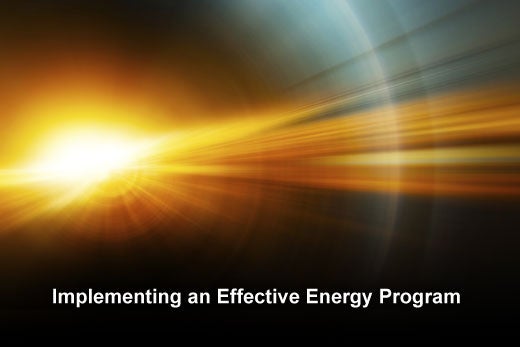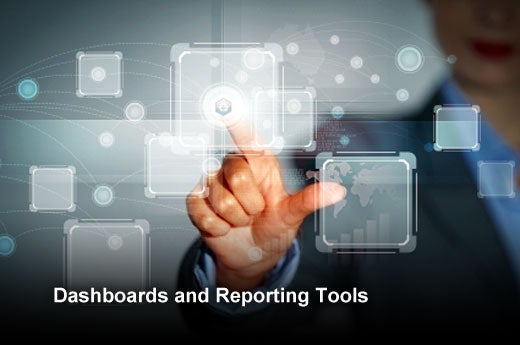Energy intelligence has historically been hard to quantify or employ due to the data collection challenge in the built environment. However, with the commoditization of sensors, controls, and wireless connectivity — part of the Internet of Things — the opportunity to apply these technologies to energy management initiatives is here. With rising energy costs and sustainability reporting pressures, it is more important than ever to understand an organization’s energy use and patterns as a foundation for reducing costs, maintaining gross margins, and reporting on key performance indicators.
What is energy intelligence? It is a comprehensive framework for gathering knowledge about enterprise-wide energy and using it for strategic advantage. It requires a combination of a committed workforce, key processes, and technology. It is based on access to energy-focused operational information that can be used to understand broad operational patterns and inform actions. The good news? Rapid technology advances – often embedded in next-generation versions of traditional systems — are instrumenting the built environment — and creating new opportunities to aggregate, analyze, and act on this new data set.
Implementing an effective energy intelligence program involves multiple steps, processes, and measures. However, the payoff is well worth it as insight into energy data allows executives to make well-informed decisions based upon in-depth operating knowledge. Companies eager to become more effective in their energy initiatives should consider the following strategies identified by Aaron Kless, director of application engineering, Digital Lumens.

Implementing an Effective Energy Program
Click through for six steps organizations can use to create an energy intelligence strategy, as identified by Aaron Kless, director of application energy at Digital Lumens.

Create a Cross-Functional Team
Step 1: Create a cross-functional team to support enterprise energy intelligence.
While there are many approaches to energy intelligence, one of the most effective for long-term success is organizational culture. It is crucial to have the right structure in place to build an organization’s energy intelligence infrastructure, and support must begin with executive leadership. Cross-functional teams including facilities, IT, sustainability, and other stakeholders — backed by top-level management — help to ensure that energy enterprise intelligence is a strategic imperative and supported across the entire organization.
Most energy intelligence programs struggle when sole responsibility of execution is left to the organization’s energy team. Instead, cross-functional groups ensure success since every group has accountability and a stake in the outcome. This team needs to identify high-level goals for energy intelligence that should guide priorities and investments.

Establish an Enterprise-Wide Framework
Step 2: Establish an enterprise-wide energy intelligence framework.
By establishing an enterprise-wide framework for energy management, decision makers within an organization have a unified view of energy drivers and trends across the organization. Approaching energy management in a uniform manner helps organizations understand energy patterns, eliminate wasteful consumption wherever possible, and optimize operations. For example, with detailed hourly energy data that can be correlated to employee productivity metrics or manufacturing throughout, facility managers can fine-tune practices to avoid peak load charges, understand employee movement across the facility, or optimize inventory placement to allow faster access and better employee performance.

Automate Data Collection
Step 3: Automate data collection and store in a central location.
Switching from manual data collection to an automated system has a profound impact on success, allowing companies to make real-time, data-driven decisions. And, the latest generation of IoT-enabled devices makes this task much easier than ever before, automatically generating large volumes of useful data. With automated access, organizations have easy access to this valuable resource, and the data quality is significantly higher because the manual processes, which can be prone to reporting errors, have been replaced.
Additionally, moving to automated collection allows enterprises to view events in real-time to maximize operational efficiency, improve energy efficiency, and reduce both process and non-process energy intensity. These capabilities and collection methods are a key pillar for a successful enterprise energy intelligence initiative.

Apply Analytics to Spot Trends
Step 4: Apply analytics to spot energy trends and insight.
Merging an organization’s energy data with an analytics platform helps companies understand real-time events and allows for informed decision making based on actual data. This approach helps organizations further reduce energy consumption and optimize energy intelligence.

Step 5: Energy dashboards and reporting tools.
Executives need fast access to data in order to make more intelligent decisions around energy usage, and legacy tools are insufficient and do not scale. Enterprise-wide energy dashboards give managers easy access to powerful information and replace manual spreadsheets that cannot scale in complex operating environments or across facilities.
Reporting tools and dashboards are also critical to ongoing improvement, allowing managers to see how and where lighting and other energy is being used. For example, insights that can be derived from data include where activity is concentrated in the facility or when peak usage occurs – all through integrated reports that document energy savings.

Investing
Step 6: Invest in a formal energy management solution.
Hand in glove with dashboards, energy management platforms provide executives and staff with the insight and controls to truly optimize processes and further reduce energy usage. Not only do these systems help executives bridge the gap between day-to-day tactical operations and strategic business goals, but they provide an additional layer of analytics allowing companies to significantly reduce energy usage while improving operational performance. A critical aspect of this strategy – just like other IT systems and investments – is to ensure interoperability between the energy management platform of choice and other business systems.
Once organizations commit to a formal energy management system, it is important to supplement this system with additional tools to maximize optimization and efficiency. Companies that complement their energy management system with dashboards, alerts and additional reporting tools are able to derive powerful insight to energy usage across their enterprise resulting in massive savings and efficiencies.















